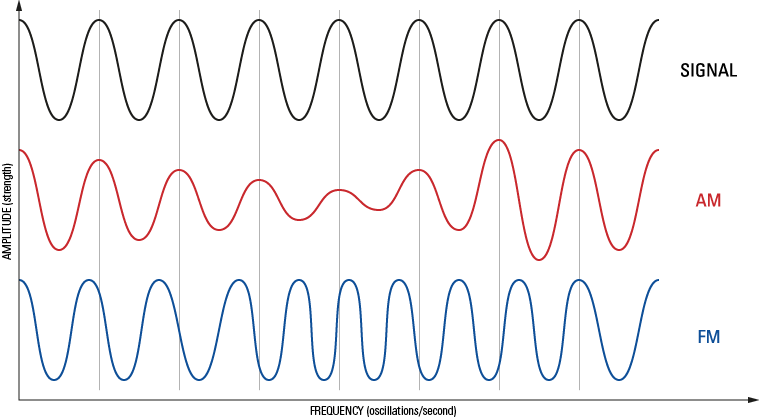An introduction to radio communications
In general, Radio is the wireless transmission of signals by modifying low-frequency waves in the electromagnetic spectrum. Radio communications specifically means radio used for two-way communications, as opposed to broadcasting. The basic principles for the two transmissions are identical for both but for the latter only one sided.
Simplified, radio means transferring information through radio waves by systematically altering one or more characteristics of the radiation. The modification could be something as simple as turning the transmission on and off, i.e. Morse code. The receiver then listens for the specific wave and can extract the original data by interpreting the modification.
In practice, the transmitter contains an energy source that generates an alternating current with a desired oscillation. The transmitter modulates (alters) one or some of the characteristics of this energy, to imprint information on it.
The modulation can for example occur by modifying either the radio waves strength or frequency. These alternatives are known as Amplitude Modulation (AM) and Frequency modulation (FM) and can be compared to speaking loudly or quiet and with a high or a low pitch.

The transmitter then transmits the modulated energy through a resonant antenna which by their designs converts the alternating current into electromagnetic radiation moving through space.
When this radiation hits a tuned antenna, it converts parts of this radiation back into an electrical current. The receiver then amplified and demodulated the current to create a useful signal that can be used to reproduce the information that was sent. E.g. sound in a speaker.
Electromagnetic radiation
Electromagnetic radiation is a form of electromagnetic field (EMF), and is one of nature’s fundamental forces. The electromagnetic field is, as the name implies, a combination of an electric and magnetic field. An electric field always surrounds a static, electrically charged, particle. When the charged particle moves relative to the observer, creating an electrical current, it also generates a magnetic field and an electromagnetic field appears. I.e. all charges and currents emit an electromagnetic field.
Electromagnetic radiation in turn is an EMF intense enough to not be affected by its source. Electromagnetic radiation is thus a type of energy emitted by particles showing a wave-like behaviour when moving through space. The intensity of these electric and magnetic fields have a constant relationship. They oscillate perpendicular to each other and perpendicular to the direction of energy and wave propagation.

Electromagnetic radiation moves away from its source at a constant speed of almost 300 000 km/s, the speed of light.
EMR is classified by its frequency, i.e. how many highs (or lows) it has per second. These classifications can be seen in the illustration below, ranging from low to high frequencies. The type of radiation that is categorized as radio waves have lowest frequencies in the spectrum. Depending on its frequency the radiation gains certain properties, which has led to the wide range of applications of EMR. Besides radio waves the spectrum also consists of microwaves, infrared radiation, visible light, ultraviolet radiation, x-rays and ultimately gamma rays.
